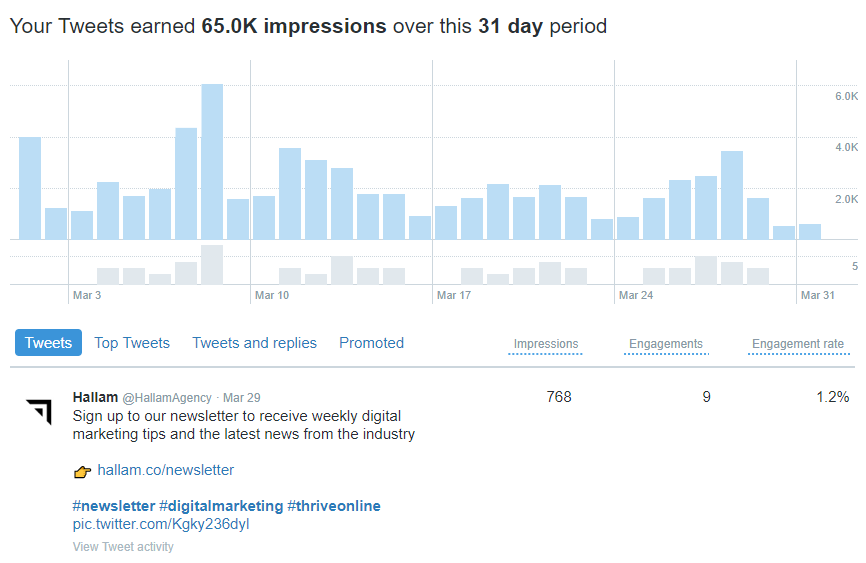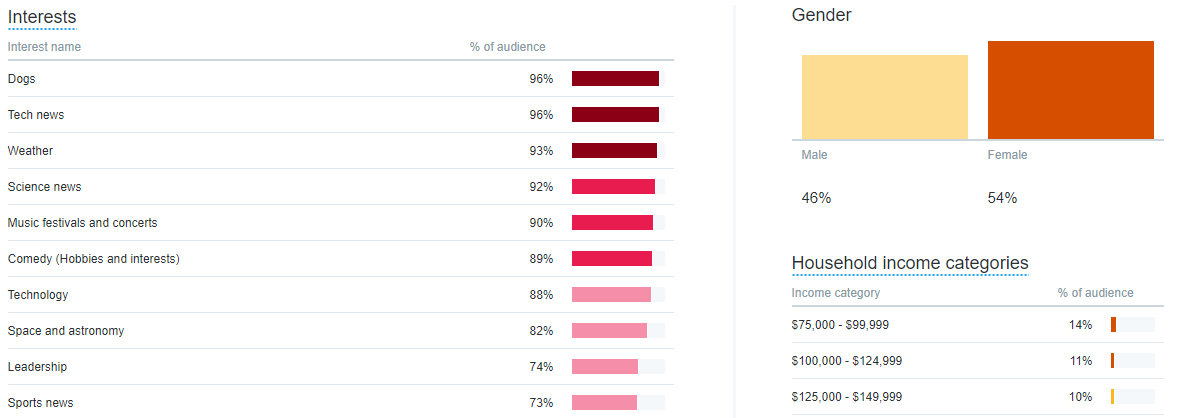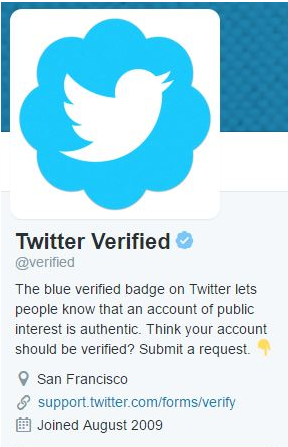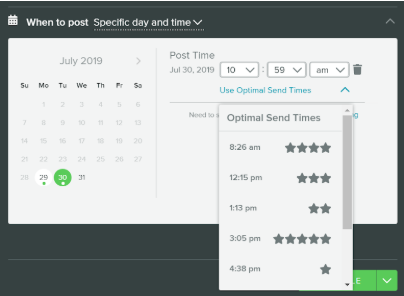5 steps to creating a successful Twitter strategy for business
Although creating an effective Twitter strategy can take a lot of time and investment, the benefits of a successful strategy are endless.
It’s likely that several people will have access to your company’s Twitter account, from the marketing manager to the managing director, and perhaps even external agencies. Implementing a solid Twitter strategy is vital to ensure consistency is maintained by all parties involved.
There is no single correct method when it comes to Twitter strategies, and this can encompass both organic and paid marketing. It’s also worth noting that the goals and objectives of each strategy will vary from one business to the next.
In this blog, I will run through my top 10 tips on how to use Twitter effectively so that your business can maintain its competitive edge, and avoid making these common social media mistakes.
1. Determine goals and objectives
Setting goals and objectives is vital for long-term success. How can you reach your aims, if you haven’t defined what they are?
Goals enable you to track and measure success and provide you with insights that can guide your strategy as it evolves.
Some common objectives to aim for with your Twitter strategy include:
- Increasing your number of followers
- Increasing engagement
- Increasing traffic to your website
- Enhancing your customer service
- Promoting your brand
- Generating new business
- Becoming an information source
Evidently then, there are many objectives that can be measured and analysed, but you need to decide which metrics are most relevant to you and will truly show the difference that social media is making to your business.
2. Confirm a reporting process
Once you’ve determined your metrics, it is important to produce an analytical report to track and measure the success of your strategy. You can do this using the analytics section on Twitter.

You should produce a report on a monthly basis, but if this isn’t in your capacity, then it is absolutely necessary to produce a report at least every quarter.
This method enables you to track the success of your campaign effortlessly, so you can clearly identify which tweets or pieces of content have had the greatest and smallest impact, and the reasons behind this.
The report should outline the activity undertaken that month on your Twitter account, how many times your pieces of content were shared, liked and read, how many people were driven to your site as a result, and how many new followers you received.
Without doing this, how else will you show a return on investment?
3. Define your audience
Although it may sound obvious, defining your target audience is the foundation of any business’s marketing plan and strategy.
Not only is it important to define your audience, but it is also essential that you regularly monitor changes to your audience over time, as you begin to push more new content through Twitter.
In your monthly report, you will have an overview of the profiles of people who interact with you. Audience insights are also available to access in Twitter analytics, and this shows what your followers are interested in. It’s also important to ensure that the accounts you engage with are aligned with your audience’s interests.

4. Get your tone of voice right
Platforms like Twitter are hotbeds of industry chat so you need to actively participate in the conversation in order to maintain your competitive edge.
Your tone-of-voice should help reinforce your company’s values and personality. Users can be hostile to the over-use of automation, so you want to appear human and approachable. You should aim to be informative but not intrusive. Being overly promotional is never well-received either. Adding a human touch is vital to the success of a Twitter strategy for business.
Typically, accounts remain anonymous (i.e. no named person runs it) so it’s helpful to define a ‘voice’ so that tweets from multiple sources remain smooth and consistent.
Finally, it’s important to decide how you will approach promoting products and using calls to action to ensure you gain trust from your followers.
5. Share a variety of quality content
As mentioned earlier, Twitter is a powerful platform to expand the influence and visibility of your brand. The types of content you share on your account should demonstrate the values and personality of your brand.
Businesses shouldn’t use Twitter as an advertising platform to share content centred entirely around the services they provide on a day to day basis. Instead, quality content should be a mixture of promotional, interactive and relevant posts which appeal to your audience and position you as a thought leader.
Listed below are examples of content which can be beneficial to your brand:
- Promotional content
- Relevant blog posts and articles
- Upcoming events
- Content produced by other companies
- Interactive content (e.g. quizzes and competitions)
- Engaging questions
To stay on top of your Twitter campaign, why not use our free social media calendar? This will enable you to plan ahead, stay organised, remain consistent and prevent writer’s block.
It’s important to share and engage with content that isn’t your own but is relevant to your industry in order to stay ahead of the game and remain relevant. I will go into more detail on this later.
How to start a Twitter chat
Alongside quality content, interactive platforms such as Twitter chats are a great way to engage with your audience.
Taking part in a Twitter chat is a great way to increase the visibility of your company’s brand. They are a useful tool for both individuals and businesses and are incredibly easy to use.
Twitter chats are topical conversations which enable you to share your platform and engage with a community of users that listen out for your expertise. Usually, they take place on a weekly basis and are always scheduled on the same day, at the same time.
Below are some tips you should consider when hosting a Twitter chat:
- Know your audience
- Create a chat-specific hashtag
- Time things perfectly
- Don’t go in without a plan
- Let people know that you’re chatting
Hosting regular Twitter chats will increase your brand’s authority and relevance and position you as a thought leader in your sector.
Top Twitter tips to get the most out of your account
How to get your Twitter account verified
The blue verified badge on Twitter lets people know that an account is authentic and it showcases you as having a high-quality account that is of interest to the public. This is particularly beneficial for businesses operating in the service industries.

Once you are verified, you will be placed amongst the ranks of just 187,000 of 320 million Twitter users who currently have verified status. That’s just 0.6% of all Twitter users.
Getting your Twitter account verified is a straightforward application process. However, unfortunately, Twitter’s verified account programme is currently on hold, and they aren’t accepting any new verification requests presently.
Interact with users
Engaging with your followers is absolutely vital for the success of your Twitter strategy. Successful users on Twitter know that social media communication is a two-way street.
On the one hand, we know that using Twitter well means carefully creating messages and broadcasting them into the Twittersphere.
But businesses who have implemented a successful Twitter strategy know that their success doesn’t just depend on this. Powerful users know that frequent interaction with your business community is essential and that the listening process starts with following the right accounts.
Who to follow on Twitter
Twitter can also be used to support the relationships needed for link building. By just listening to and interacting with users, you can begin to build relationships which in the long term can help you build links.
These relationships need to be natural, honest and personal. So, by taking a genuine interest in what people are saying, you will build valuable relationships and earn trust, therefore enabling you to earn links.
Don’t just post your own content
Constantly producing content centred around brand promotion and sales never works well, and the repetitive nature of this will lead your audience to get bored quickly, meaning the number of followers and engagements will decrease significantly. Therefore, it’s important that you build relationships with other influential brands in the sector and your audience.
Sharing content produced by other businesses or thought leaders in your industry is also vital for the success of your social media marketing strategy. The ability to effectively engage with other brands can be difficult, but when done well, this allows your brand to stay interesting and relevant.
It’s also important to interact and engage with your followers, giving them the opportunity to get involved in the conversation and have their questions answered. Listening and reacting to your audience’s opinions positions you as an approachable company with a genuine interest in your followers.
Follow relevant people
The accounts you choose to follow on Twitter are a subtle but powerful indicator of your positioning in your business sector. It’s important for businesses to shape their profiles based on the reputational messages they want their brand to convey. Are you following the most important people in your sector?
The process of following is a two-way street. The accounts you choose to follow are made aware that you are following them, which increases brand awareness. And the following process enables you to keep abreast of the latest news and views in your industry.
Is it appropriate for your business account to be following pop singers on Twitter? Probably not, unless you work in the entertainment sector or they are in some way associated with your brand.
Below is a list of some good people to follow as you begin to refine the accounts you choose to follow on Twitter:
- Industry leaders.
- Journalists and the trade press.
- Clients and customers.
- Other influential Twitter accounts.
Analyse your best performing times
The success of your Twitter strategy lies heavily in your timings. Sending content out at optimal times is vital for the success of your campaign. You can review your best performing tweets in Twitter analytics or in your monthly report.
There are a variety of useful social media management tools available to you such as Sprout Social and Hootsuite. These platforms enable you to review your social media activity, draft, schedule, edit and approve posts.

When scheduling a tweet, you will be asked to choose a post date and time. On Sprout Social, you can select an ‘optional send time’. Essentially, this is a list of times in which your tweet will perform the best in terms of visibility and engagement. These times are rated from the most to the least effective.
Need more advice on how to use Twitter effectively or guidance with your Twitter strategy for business? Get in touch here.

